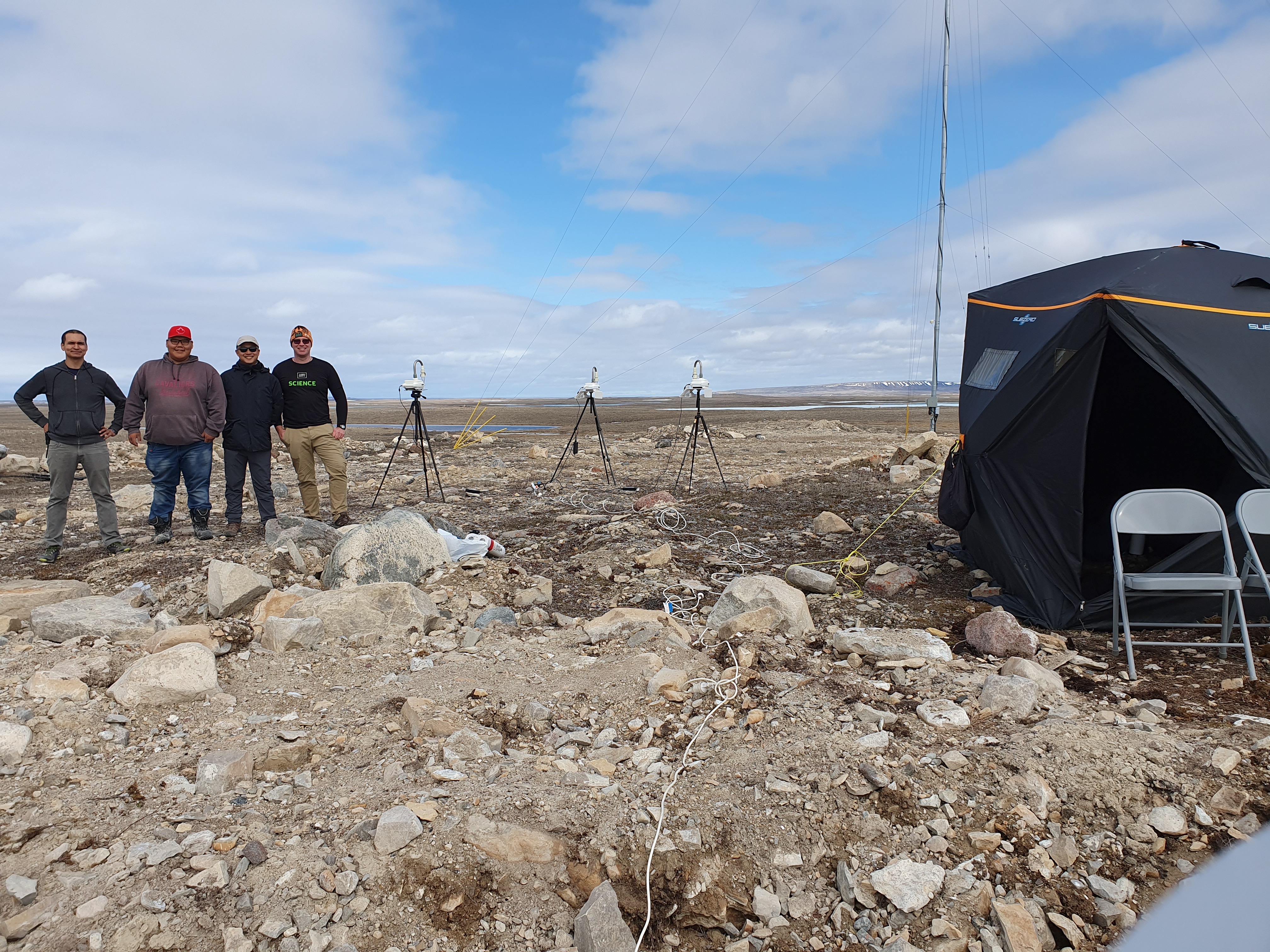The Global Aerosphere Microbiome Project
Authors
- S.D.J. Archer, Yale-NUS College and Department of Biological Sciences, National University of Singapore, Singapore, and School of Science, Auckland University of Technology, Auckland, New Zealand
- K.C. Lee, School of Science, Auckland University of Technology, Auckland, New Zealand
- S.B. Pointing, Yale-NUS College and Department of Biological Sciences, National University of Singapore, Singapore, stephen.pointing@yale-nus.edu.sg
- B. Vandenbrink, Polar Knowledge Canada, Canadian High Arctic Research Station, Cambridge Bay, Nunavut, Canada
- I.D. Hogg, Polar Knowledge Canada, Canadian High Arctic Research Station, Cambridge Bay, Nunavut, Canada
Citation information
Archer, S.D.J., Lee, K.C., Pointing, S.B., Vandenbrink, B. and Hogg, I.D. 2020. The Global Aerosphere Microbiome Project. Polar Knowledge: Aqhaliat Report, volume 3, Polar Knowledge Canada, p. 69–71. DOI: 10.35298/pkc.2020.17.eng
Article
In collaboration with Canadian High Arctic Station (CHARS) scientists, Bryan Vandenbrink and Ian Hogg, two researchers from the Auckland University of Technology (AUT) in New Zealand (Stephen Archer and Kevin Lee), visited Cambridge Bay for five days in June 2019. They collected massive volumes of air that will be used to understand the bacteria and fungi in Arctic air and how this compares with air worldwide. This project, the Global Atmospheric Microbiome Project will provide critical baseline data of microbial transportation in the Arctic that is central to environmental stewardship in the region. As more land becomes available in the Arctic, the first colonizers will be microbial and likely transported by air. Understanding the extent, rate, and diversity of airborne microorganisms present at Cambridge Bay will provide valuable information in determining what changes will likely occur in the near future. Additionally, this study has a global focus, in that the data generated will be central to understanding fundamental ecological questions of microbial movement. This will be helpful for studies of the microbial influences on atmospheric events, biogeography, and human health – all of which are known to be impacted by airborne microorganisms.
How connected microbial habitats are to one another is a central question to microbial ecology and is becoming increasingly important to understanding ecosystem resilience in a changing global climate. The air has long been believed to be a primary transportation mechanism; however, few details regarding the distribution capability of microorganisms via the air have been answered. Dr. Archer has developed a methodology that can reliably characterize the total airborne microbial community using high-volume vortex air samplers and sensitive DNA extraction and sequencing protocols (Archer et al., 2019 a,b).
This project aims to collect the first consistent series of airborne samples from across the globe to identify shared and unique components at unprecedented genetic resolution, which has been identified as a critical first step towards understanding this ecosystem (Archer and Pointing, 2020). As a more robust data set is built, it should be possible to link community changes to environmental variables and air mass sources, evaluate ideal minimum sampling durations to capture ecological diversity, and determine variation in aerosol communities, over various spatial scales.
By the end of 2019, all samples were collected, with results expected to be available and published by the end of 2020. Although the trip was short, both Kevin and Stephen are keen to return to CHARS to continue studying the microorganisms in the air and soils around Cambridge Bay.

Figure 1: Primary Investigator, Dr. Stephen Archer, standing downwind from his air samplers who are each collecting 18,000 litres of air every hour to find out what bacteria and fungi are present in the air, and comparing them with samples collected across the world.

Figure 2 :Collecting air samples as part of the global aerosphere microbiome project. Pictured from left to right: Bryan Vandenbrink and Calvin Ehaloak from CHARS with Dr. Kevin Lee and Dr. Stephen Archer the AUT.
Videos that were made for the project including:
- Northern hemisphere (Cambridge Bay included)
- Southern hemisphere (full and teaser video)
- Website for project
- The end of the video includes a full list of people who helped the project.
References
- Archer, S.D.J, Lee, K.C., Caruso, T., Maki, K., Lee, C.K., Cowan, D., Maestre, F., and Pointing, S., 2019a. Microbial dispersal limitation to isolated soil habitats in the McMurdo Dry Valleys of Antarctica, Nat Microbiol 4, 925–932 doi:10.1038/s41564-019-0370-4
- Archer, S.D.J., Lee, K.C., Harvey, M., and Pointing, S., 2019b. Air mass source determines airborne microbial diversity at the ocean–atmosphere interface of the Great Barrier Reef marine ecosystem. ISME J doi:10.1038/s41396-019-0555-0
- Archer, S.D.J., and Pointing, S., 2020. Anthropogenic impacts to the atmospheric microbiome. Nat Microbiol 5, 229–231 doi:10.1038/s41564-019-0650-z
Polar Knowledge Canada
For media inquiries, contact:
communications@polar-polaire.gc.ca
Page details
- Date modified: